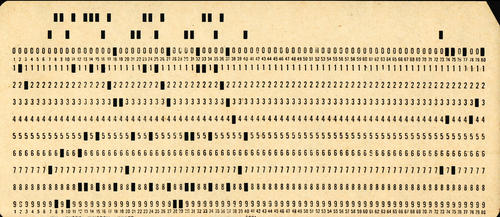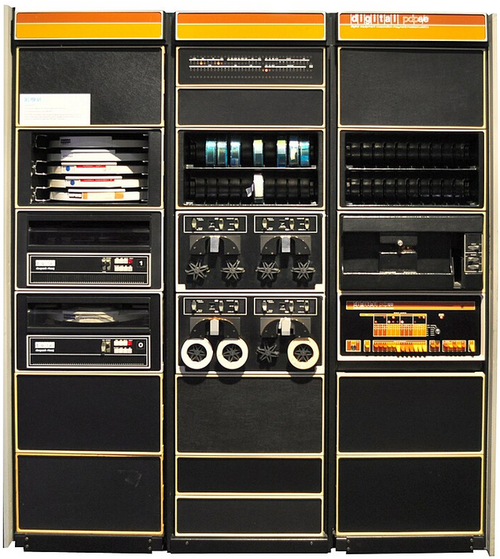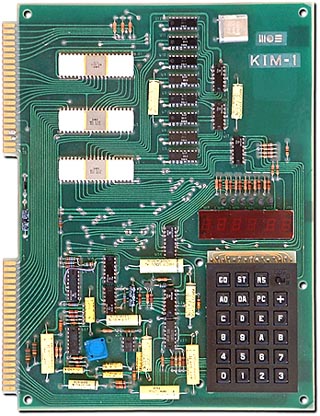The computer above was my first computer. My entire life changed forever when my wife Bonnie bought me my first computer, a KIM-I. It was a 6502 microprocessor based single board computer with 2K of ROM (Read Only Memory) and 1K of RAM (Random Access Memory). It was developed and produced by MOS Technology, Inc. and launched in 1976. It cost about $250, about $1,300 in today’s money.
I had to learn assembly language to write any programs for it. Assembly language is the next step up from the pure machine language of One’s and Zero’s. Assembly had more English like names to the instructions, for instance CMP for CoMPare. I would have to enter the program using a small Hex keypad. Then I would save the program onto a cassette tape. To load a program you’d play the cassette into the computer. This could be a long process.
When I got better at it, I also started to write articles on programs and about programming the KIM-I. I wrote a program that would play fractal 1/f music. I sold the article for $400. It paid for the computer.
I started to go to computer shows, and by adding memory and parts I started to get the KIM-I to program in Basic. I bought a version of Microsoft Cassette Basic for the computer. I was having a problem with it and called Microsoft. Bill Gates actually answered the phone. He told me that I should be calling the vendor to solve the problem. I should have bought stocks right then and there.
Thanks to the Army I was able to take a home course in computer repair. It came with a kit computer (above) that you had to put together, and that had 16 bytes in it; see the 16 banks of 8 switches on the left. The course was all about learning how to repair and program a PDP-8 computer (see below). You could program the kit computer to play Tic-Tac-Toe.
I wrote more computer programs, and was generally getting into programming. I built a printer out of an IBM Selectric terminal, and wrote an article about it. It was published in an English magazine.
I was able to print out my program code with letter quality printing, but it took such a long, long time. I finally got a dot matrix printer.
Small computers were just getting into use in the 70’s, and so I wrote and published a lot of articles about them. Now I have about 17 magazine articles and about 5 book articles to my name, and even an international one.

Bonnie got me a Commodore 64 computer (above) that cost about $150 at the time. It was a device you could hook up to the TV for output. But it wasn’t good enough because it still used a cassette recorder for storing programs. Nice looking computer, though.

Then I bought a TRS 80 computer (above). I didn’t buy such a nice monitor that is shown above, but I did have a cathode ray tube video monitor (below) that worked pretty well. At the time I purchased the TRS-80 it still used a cassette recorder, but soon I bought a floppy disk drive for it. That changes the whole process of programming.
I started going to the TRS 80 Users Group in Maine, and became the editor of our newsletter. I called it “Byte Babble”. I was still writing programs and articles. I still have the Commodore 64, the TRS-80, and the kit computer.
I took a course in the computer language BASIC {Beginners’ All-purpose Symbolic Instruction Code} at Westbrook College in 1995.
You programmed your project by using IBM punch cards {below}, one card per line of code; you punched the holes in them on a machine like a typewriter, the group of cards would then be sent up to the college in Orono, then the cards would come back a day or two later, and either the program worked or it didn’t. If it didn’t, you’d fix it and create one or more new cards. Then go through the same process again. Complicated programs could be really nasty. But this was almost state of the art in 1995 Maine.


Later in the course, we sat at a terminal and then did the programming on a PDP 8 computer (above) in the same room. It was the same computer in the computer repair course I had taken before. I even wrote a Biorhythm program on it.
See Biorhythms here
I now was not only programming in Basic, but I also learned a language called Forth. It was designed by Chuck Moore to program his radio frequency antennas to view into space. It was the best language that I ever programmed in. I bought a word processor written in FORTH for the TRS-80. It was, and still is, the fastest word processor ever written.
My computers that I have now you’ve all probably seen before if you’ve ever searched for one: An ACER desktop running Windows 10, an HP desktop running Win 10, A Dell laptop running Win 10, a home-made computer running Win 7? or 8? or 10?, an AMD Athlon running Win XP, and an ACER chromebook running Android.
I love all my computers.
Oh, and take a look at my “Making electronic things” page to see really tiny computers.
